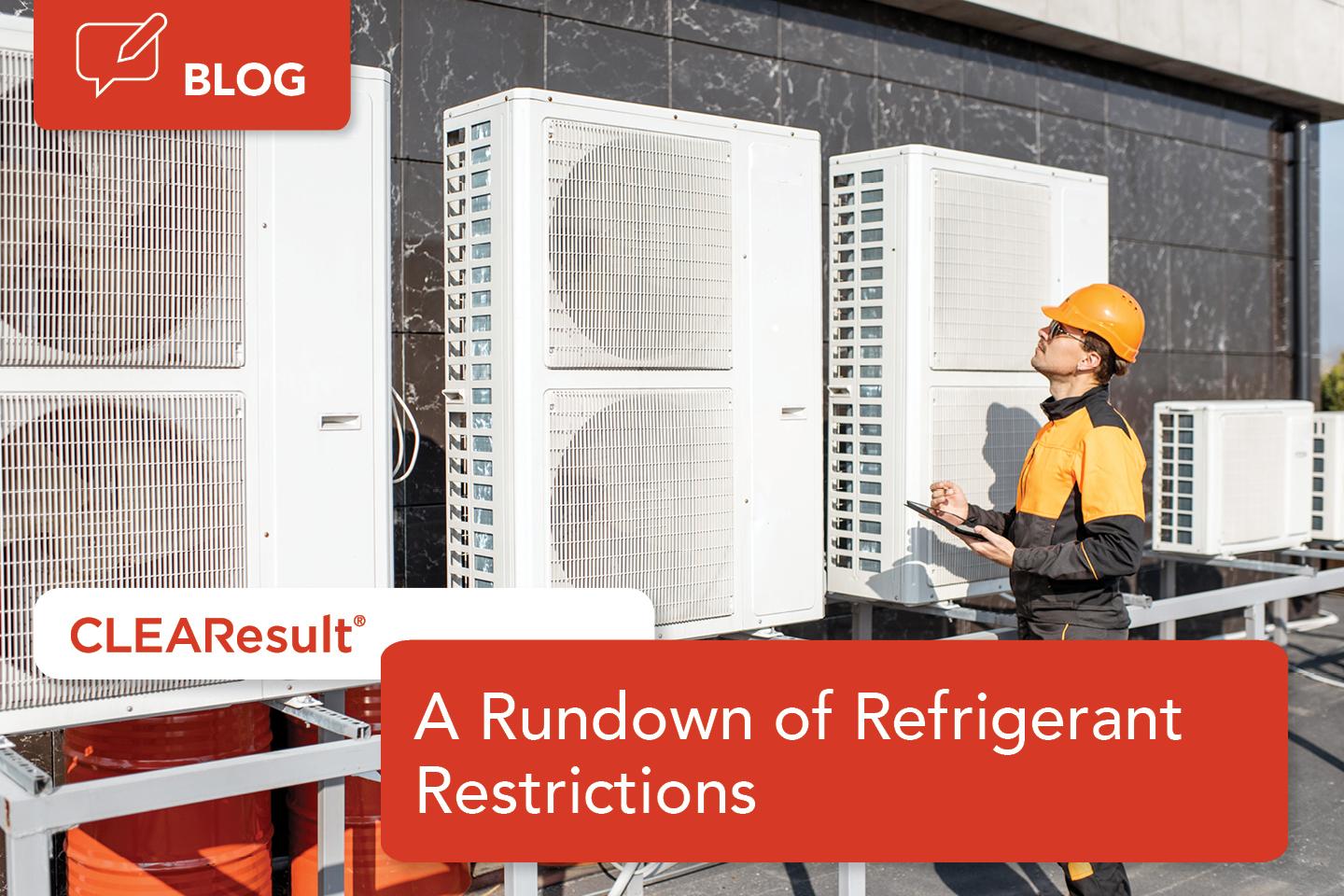A Rundown of Refrigerant Restrictions

A recent proposal by the EPA to mitigate climate change will greatly impact the HVAC industry in the United States. The proposal is to reduce the global warming potential (GWP) of refrigerants— a measure of the relative climatic impact of greenhouse gases (GHG). As a result, high GWP hydrofluorocarbon refrigerants are scheduled to be phased out as early as January 1st, 2025. While the changes needed for the phasedown are not fully approved, it's important to stay abreast of what’s being discussed and understand the potential impact to energy savings.
What are Hydrofluorocarbons?
Hydrofluorocarbons (HFCs) are potent GHGs developed and manufactured as replacements for ozone-depleting substances (ODS) used in refrigeration, air conditioning, aerosols, fire suppression and foam blowing. The only problem is some HFCs have a high GWP that can be a thousand times greater than carbon dioxide (CO2).
HFC use has been growing worldwide due to the phaseout of ODS for refrigeration and air conditioning equipment. In 2019, around 75% of total HFC use in the United States came from refrigeration and air-conditioning equipment in homes, commercial buildings and industrial operations. The Montreal Protocol has also contributed to the proliferation of HFCs. It initially encouraged the adoption of HFCs to replace chlorofluorocarbons (CFCs), gases that cause ozone depletion.
Steps in the Right Direction
On September 21st, 2022, the U.S. ratified the Kigali Amendment to the Montreal Protocol, joining 137 other countries that have already taken this step forward. This international agreement will gradually reduce the consumption and production of HFCs to protect against climate change.
Additionally, the American Society of Heating, Refrigeration, and Air-Conditioning Engineers' (ASHRAE) 2022 standards establish a uniform system for assigning refrigerant reference numbers, safety classifications, and refrigerant concentration limits. Previous and current refrigerants used in homes and small to medium businesses, were deemed safe from a toxicity and flammability standpoint and were labeled as A1 refrigerants. The proposed refrigerants to replace HFCs are classified as A2L. The A2L refrigerants are slightly flammable but have been studied and approved for use in HVAC equipment.
Finally, the AIM Act, which was included in the Consolidated Appropriations Act, directs the EPA to phase down production and consumption of HFCs in the United States by 85% over the next 15 years. As a result, refrigerants used in new HVAC equipment will need to have a GWP of no greater than 700 by January 1st, 2025.
Considerations for the Future
HVAC manufacturers are planning on using two refrigerants, R-454b and R-32, to replace high GWP refrigerants. U.S. manufacturers will most likely use R-454b, while Asian and European manufactures will likely use R-32 for products sold in the United States. To put things into perspective, the current refrigerant typically used in residential and commercial air conditioner and heat pump equipment has a GWP of 2,088 but R-454B and R-32 have a global warming potential of only 467 and 675, respectively. That's less than a third of the global warming potential from these refrigerants which is terrific news for the planet!
HVAC contractors, HVAC distributors, homeowners and utility energy efficiency programs can expect these changes to affect the energy performance and the costs of new HVAC equipment. Also, the cost of repairing existing HVAC equipment that uses the old, higher GWP refrigerant (R-410a) will likely increase as the phasedown occurs. Once this proposal is finalized, we’ll share more on its long-term effects as well as how to prepare.
________
Mark Jerome has nearly 30 years of experience in the heating, ventilation, air-conditioning and refrigeration (HVACR) industry. He has worked in all phases of the residential and commercial sectors. Mark has been a voting member of the Regional Technical Forum (RTF) since January 2007 and was appointed the Vice Chair as of January 2022. He was appointed as a member of the Demand Response Advisory Committee (DRAC) as of June 2021. Mark also serves or has served on a number of expert panels in the Pacific Northwest. As Senior Technical Energy Manager with the Engineering department of CLEAResult, Mark plays critical roles in several energy efficiency programs, including managing the Building Science & Engineering Team (BSET) as well as providing program design and training for residential Heat Pump and AC programs offered by several of our clients. Mark has been certified as an assessor & quality assurance inspector for the DOE Home Energy Score. Mark is currently a quality insurance inspector, trainer and program subject matter expert for the Bonneville Power Administration (BPA) Performance Tested Comfort Systems (PTCS) Residential Heat Pump & Duct Sealing Programs. Mark is also an active BPI proctor and trainer and an EPA 608 refrigerant trainer and proctor.